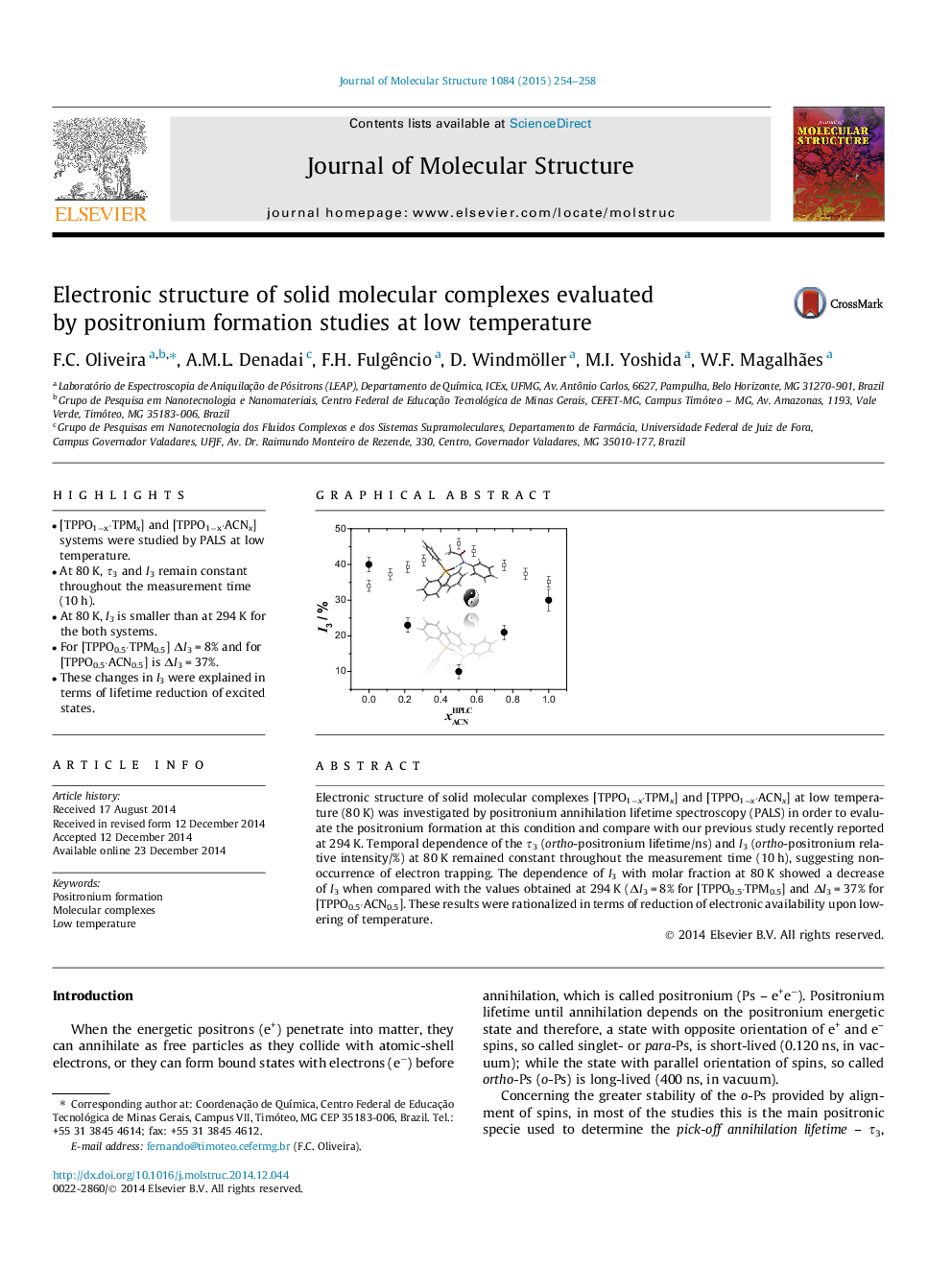| کد مقاله | کد نشریه | سال انتشار | مقاله انگلیسی | نسخه تمام متن |
|---|---|---|---|---|
| 1405404 | 1501733 | 2015 | 5 صفحه PDF | دانلود رایگان |
• [TPPO1−x⋅TPMx] and [TPPO1−x⋅ACNx] systems were studied by PALS at low temperature.
• At 80 K, τ3 and I3 remain constant throughout the measurement time (10 h).
• At 80 K, I3 is smaller than at 294 K for the both systems.
• For [TPPO0.5⋅TPM0.5] ΔI3 = 8% and for [TPPO0.5⋅ACN0.5] is ΔI3 = 37%.
• These changes in I3 were explained in terms of lifetime reduction of excited states.
Electronic structure of solid molecular complexes [TPPO1−x⋅TPMx] and [TPPO1−x⋅ACNx] at low temperature (80 K) was investigated by positronium annihilation lifetime spectroscopy (PALS) in order to evaluate the positronium formation at this condition and compare with our previous study recently reported at 294 K. Temporal dependence of the τ3 (ortho-positronium lifetime/ns) and I3 (ortho-positronium relative intensity/%) at 80 K remained constant throughout the measurement time (10 h), suggesting non-occurrence of electron trapping. The dependence of I3 with molar fraction at 80 K showed a decrease of I3 when compared with the values obtained at 294 K (ΔI3 = 8% for [TPPO0.5⋅TPM0.5] and ΔI3 = 37% for [TPPO0.5⋅ACN0.5]. These results were rationalized in terms of reduction of electronic availability upon lowering of temperature.
Figure optionsDownload as PowerPoint slide
Journal: Journal of Molecular Structure - Volume 1084, 15 March 2015, Pages 254–258
